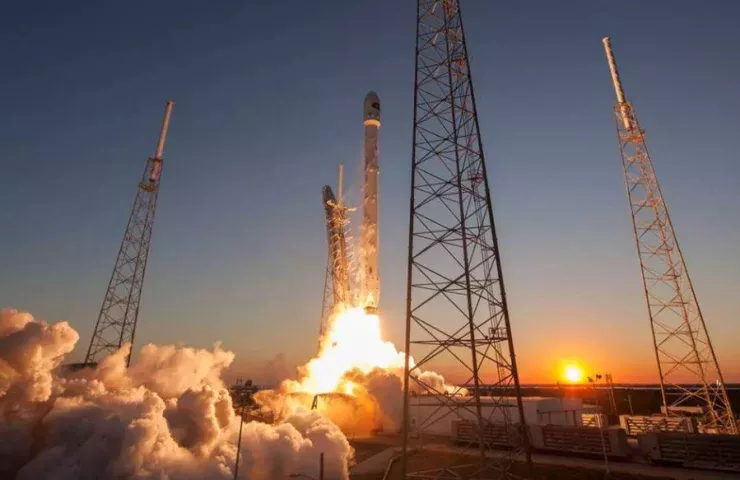Elon Musk's company is providing the landing system for the first manned landing under NASA's Artemis lunar exploration program, a major milestone the agency hopes to achieve in or around 2025.
Satellite trackers have determined that the upper stage of a SpaceX Falcon 9 rocket launched in February 2015 will hit the Moon on March 4, Ars Technica's Eric Berger said on Monday (January 24). The researchers were led by Bill Gray, head of Project Pluto, a company that provides software to professional and amateur astronomers.
The rocket in question launched the Deep Space Observatory (DSCOVR), a collaboration between the US National Oceanic and Atmospheric Administration and NASA.
SpaceX typically disposes of the Falcon 9's upper stages after launch, sending them back into Earth's atmosphere where they burn up. (SpaceX is known for landing and reusing the first stages of its Falcon 9 and Falcon Heavy rockets. But at the time of the DSCOVR launch, the company had yet to land the first stage; the first such success came in December 2015.)
However, the upper stage detached so high after the DSCOVR dispatch that it did not have enough fuel to return to its home planet, writes Berger. Thus, she travels through the Earth-Moon system in a long and looped orbit for almost seven years.
Her time is almost up. Gray, using data collected by other observers, calculated that the scene would crash into the Moon on March 4 at 7:25 am EST (1225 GMT). The collision will occur on the far side of the Moon, at approximately 4.93 degrees north latitude and 233.20 degrees east longitude.
"Suggestively, the above prediction may be off by a degree or two minutes from the predicted time," Gray wrote on his blog about the upcoming collision, citing the difficulty of accurately modeling how sunlight pressure moves a tumbling cylindrical object such as like a rocket stage.
“We will need (and I am sure we will receive) additional observations in early February to refine the forecast; this will significantly reduce uncertainty,” he added.
Because this will happen on the far side of the Moon, the impact will not be visible from Earth. But determining its time and location is still important, potentially allowing lunar-orbiting spacecraft like NASA's Lunar Reconnaissance Orbiter (LRO) and India's Chandrayaan 2 to study the resulting crater — "and, if we're lucky, maybe take a picture of the impact,” Gray wrote.
For those who ask: yes, the second stage of the old Falcon 9 rocket, launched into high orbit in 2015, is going to fall on the moon on March 4th. The Smithsonian Center for Astrophysics in Cambridge, Massachusetts, tweeted on Tuesday (January 25).
Objects "left in lunar orbit are unstable - eventually either colliding with the Moon or Earth, or deflected into solar orbit," he added in another tweet.
The upper stage of the Falcon 9 will also not be the first rocket body to hit the Moon. For example, NASA sent the upper stages of several Saturn V rockets to the Moon during the Apollo program. And in 2009, the agency deliberately crashed the upper stage of an Atlas V rocket that launched an LRO into a crater at the moon's south pole.
The impact ejected a significant amount of water ice, suggesting that this resource is abundant in the Moon's polar regions.
Grey wrote that the Falcon 9 stage is headed for a relatively boring (by comparison) part of the Moon. But its influence can still provide interesting insights into lunar geology.




